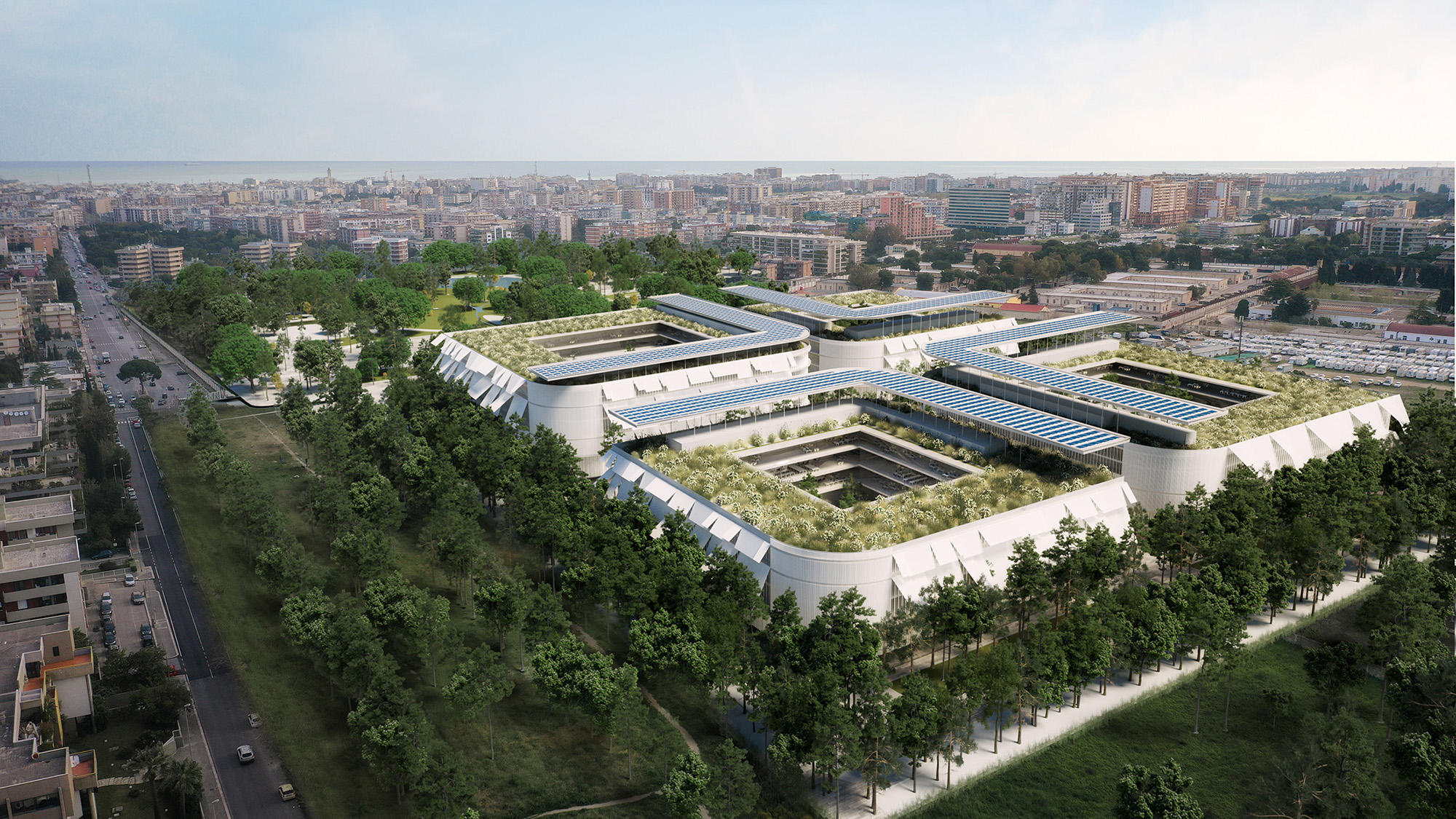Law Courts Park in Bari
An energy-efficient and environmentally friendly public area to serve the city

The commission for the Technical-Economic Feasibility Design of the Bari Law Courts Park and the Final Design of the first functional lot was awarded to the JV led by Atelier(s) Alfonso Femia, with Proger, Magnanimo Ingegneri Associati and Land Italia. The winning proposal of the design competition envisages the construction of a four-building complex intended for the judicial center, with 44,000 sqm of covered area, within a large urban park of 104,000 sqm, for a total value of the works of 252 million euros.
The proposed four-building solution, instead of the six buildings envisaged in the tender basis, ensures the containment of construction time and costs and a limitation of the built-up area, to the advantage of the area to be used as a public park, which will be equipped with spaces for sports, play areas for children, gardens and community services, including a kindergarten.
Architect Piera Bisignani, Project Manager of the assignment, comments, “The Law Courts Park, located in the area currently occupied by the former Milano and Capozzi barracks in Bari, is an opportunity to stitch up one of the most fragmented territorial and urban areas in the Bari area, through the inclusion of an iconic project, a public area to serve the city. The project has been identified as a priority infrastructural intervention to be commissioned, therefore, the design will follow the stringent Guidelines issued by the Italian Government, which place a strong emphasis on the sustainability of the work and innovation in all its main meanings, themes, these, which have always been guiding principles of our company“.
The Law Courts Park will, therefore, be an accessible, functional and flexible work as well as energy efficient and environmentally friendly throughout its life cycle, according to the principles of the circular economy. The design approach includes the achievement of nZEB (Near Zero Emission Building) standards, and the application of environmental objectives, defined within the taxonomy system of eco-sustainable activities and the DNSH (Do No Significant Harm) principle, with the goal of LEED Gold certification and potential for achieving Platinum, thanks to passive and active energy and water-saving solutions, the abatement of CO2 emissions and the choice of materials with a high content of recycled or recovered materials.